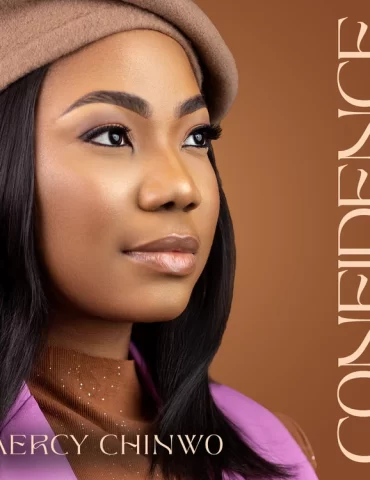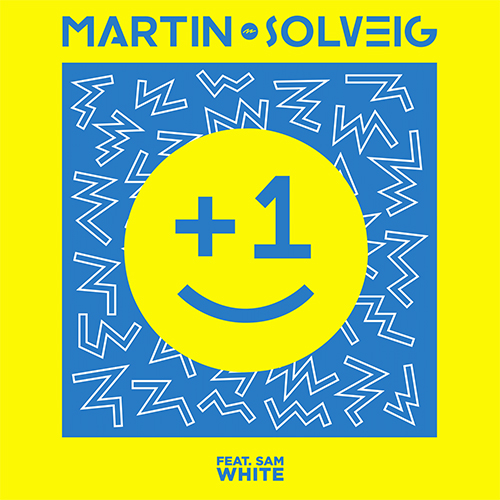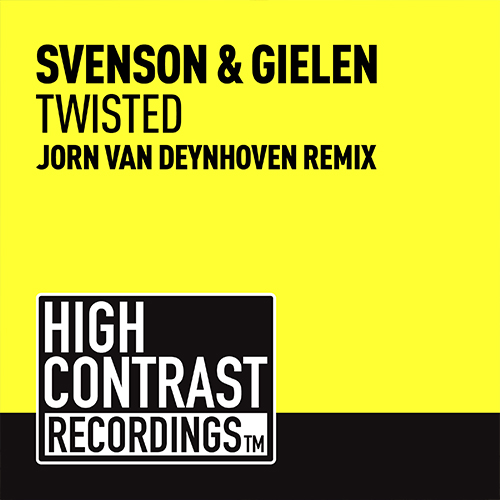The rancorous, intra-evangelical debate over critical race theory (CRT) has seemingly turned a corner. Critical race theory “examines the intersection of race, racism, and US law and policy … [showing how] US laws and public policy have been manipulated and constructed over the years to preserve privilege for those considered ‘white’ at the expense of those who are people of color” (p. 7). Five years ago, most evangelicals would have denied that CRT was influencing their thinking, writing, or theology. In sharp contrast, Robert Chao Romero and Jeff M. Liou’s new book Christianity and Critical Race Theory: A Faithful and Constructive Conversation takes a different approach, arguing explicitly that CRT is not merely “helpful” (p. 7) but “deeply forming and comforting” (p. 175). Given that Romero is a tenured professor teaching CRT via Chicana/o Studies at UCLA and that Liou is the National Director of Theological Formation for InterVarsity Christian Fellowship, both are well-positioned to offer an informed treatment of CRT and its theological implications. Unfortunately, however, their work is likely to exacerbate, rather than to allay, the concerns of CRT’s evangelical critics.
Their relatively slim book is divided into four main chapters (“Creation,” “Fall,” “Redemption,” and “Consummation”) which deliberately map some of CRT’s ideas onto a biblical-theological schema. Chapter 1 shows that the CRT concept of “community cultural wealth” is congruent with Revelation’s eschatological vision of a future kingdom composed of people from “every tribe, language, people, and nation,” each of whom brings their cultural “glory and honor” into the New Jerusalem. Chapter 2 argues that the biblical doctrine of the universality of sin coheres with CRT’s claim that “racism is ordinary” (i.e., racism is embedded in “systems and structures” that materially and psychically advantage whites and disadvantage people of color). Chapter 3 contends that CRT’s acceptance of the “voice of color” thesis (i.e., people of color are best able to understand racism and to interrupt the racial status quo) provides Christians with tools for enacting racial justice. Finally, chapter 4 contrasts Christianity’s eschatological hope with CRT’s pessimism. Romero and Liou argue that only a Christian vision of the future can fuel activism and prevent burnout within the justice-seeking “beloved community.”
Like CRT itself, Romero and Liou’s book makes some true claims that Christians can and should affirm. For example, they are right to argue that critics (and, I would add, proponents) of CRT often misrepresent or misunderstand its claims. Their discussions of the history of racism within the US under slavery and Jim Crow, the social construction of “whiteness,” and the contemporary legacy of racist laws and policies are generally correct and track well with CRT scholarship, which is often accurate and even insightful when treating these subjects. They also make it clear that they do not embrace CRT wholesale and say repeatedly that they reject some of its claims. Nevertheless, considered as a whole, the book has several serious problems.
Any work attempting to demonstrate the congruence between CRT and Christianity must begin with a description of CRT that is both accurate and thorough. Given Romero’s professional credentials, he is eminently qualified for this task. However, in this regard, the book contains notable lapses. I’ll name only three here.
First, there is little discussion of the historical antecedents of critical race theory, either its legal predecessors in the fields of legal realism and critical legal studies, or its ideological predecessors in the Neo-Marxism of Antonio Gramsci, the Critical Theory of the Frankfurt School, and the postmodernist theorizing of Michel Foucault. Second, many prominent critical race theorists, like Mari Matsuda, Charles Lawrence, Gloria Ladson-Billings, and William Tate, are passed over. Most surprising of all, Kimberlé Crenshaw, who coined both the term “intersectionality” and the term “critical race theory” itself, is not cited or even mentioned. Crenshaw’s wholesale omission from a book about critical race theory is as surprising as would be the wholesale omission of Charles Darwin from a book on evolutionary theory. Finally, and relatedly, the book includes almost no discussion or explanation of intersectionality.
Lay readers may wonder whether any of these omissions really matter. Surely, every author must be selective in what material they include and exclude. However, one of the major disputes between evangelical critics and advocates of critical race theory is over whether CRT is merely a narrow analytic tool or whether it functions like a comprehensive worldview. Given this discussion, it is vitally important to call attention to how various elements of CRT fit together within a coherent, overarching framework.
For instance, on page 142, Romero and Liou helpfully quote Delgado and Stefancic’s affirmation that “For the critical race theorist, objective truth, like merit, does not exist, at least in social science and politics. In these realms, truth is a social construct created to suit the purposes of the dominant group” (Richard Delgado and Jean Stefancic, Critical Race Theory: An Introduction, 2nd ed. [New York: New York University Press, 2012], 104). However, Romero and Liou present this claim almost as an afterthought rather than explaining how it fits centrally into the broader critical tradition. CRT—like the fields of critical legal studies, Neo-Marxism, and Critical Theory which shaped it—has always analyzed objective truth claims and “common sense” intuitions as mechanisms by which the ruling class justifies its own power and privilege. Stated briefly, all of these fields aim to “see through” dominant narratives to reveal the ways in which these narratives are really bids for power.
In this fuller context, CRT’s claim that “racism is ordinary” is emphatically not just an empirical observation or even a commentary on the lived experience of many people of color. Rather, it is a necessary entailment of the critical tradition’s views about ideology, knowledge, truth, and power. Racism is ordinary because all kinds of oppressions are ordinary and are concealed beneath supposedly natural, neutral, objective, “common sense” discourses about reason, justice, equality, race, class, gender, and sexuality. This leads to a second point.
Romero and Liou’s book not only omits Crenshaw entirely, but says almost nothing about intersectionality. Briefly stated, intersectionality is the claim that racism, sexism, classism, heterosexism, ageism, and ableism constitute “interlocking systems of oppression” that interact in complex ways to produce unique forms of marginalization. When the term “intersectionality” does appear in Romero and Liou’s book, it is left unexplored and unexplained, apart from a single sentence in the book’s glossary. Yet the very sources that Romero and Liou cite contain explicit discussions of this concept.
For example, Tara J. Yosso’s “Whose Culture Has Capital? A Critical Race Theory Discussion of Community Cultural Wealth” (Race Ethnicity and Education 8.1 [2005]: 69–91) is one of the most frequently cited sources in Romero and Liou’s book. Yet Yosso states that the first “tenet” of CRT is “The intercentricity of race and racism with other forms of subordination” (p. 73, emphasis original). She goes on to explain that “CRT acknowledges the inextricable layers of racialized subordination based on gender, class, immigration status, surname, phenotype, accent and sexuality” (p. 73).
Yosso is hardly alone in her affirmation that CRT is deeply committed to the idea that racism, sexism, classism, and heterosexism are all interlocking forms of oppression. You can find this same claim named as a “defining element” of CRT in key works spanning three decades of CRT scholarship, from Mari J. Matsuda et al.’s Words That Wound: Critical Race Theory, Assaultive Speech, And the First Amendment (New York: Routledge, 1993) to Khiara M. Bridges’s Critical Race Theory: A Primer (St Paul: Foundation Press, 2019).
Despite the absence of an explicit treatment of intersectionality, intersectional sensibilities are visible at numerous points in the book. In several places, Romero criticizes the “patriarchal” tendencies of Hispanic culture (he is part Hispanic). Readers are cautioned in a footnote that it is wrong to dismiss racism as “crazy” because this usage “unmasks forms of ableism” (p. 64). The term “Latinx,” which the authors explain is used “by academics and the younger generation both to challenge chauvinistic bias and to emphasize a belief in gender fluidity beyond the traditional male-female binary” (p. 2), shows up repeatedly throughout the book.
This failure to grapple with intersectionality is problematic on two counts. First, it glosses over one of the most obvious and glaring conflicts between CRT and Christianity: diametrically opposing views on gender and sexuality. Since its inception, CRT and movements that draw on its ideals have sought to dismantle not just white supremacy, but sexism, classism, and heterosexism. It is no accident that Black Lives Matter’s official statement of beliefs included a condemnation of “heteronormative thinking” and a commitment to transgender activism alongside its antiracist affirmations. Thus, any book that attempts to reconcile CRT and Christianity must include some discussion of this basic conflict of visions, one that is readily apparent within our culture and, increasingly, even within the evangelical church.
Second, intersectionality calls into question any insistence that CRT can be adopted as some kind of narrow analytic tool used solely to elucidate matters of race. By its very nature, intersectionality demands that race, class, gender, sexuality, gender identity, immigration status and a host of other factors all be theorized simultaneously and analogously. In every case, the ruling class (whether whites, the rich, men, or heterosexuals) perpetuate systems, structures, and narratives that justify the oppressive status quo. We may decline to call this comprehensive vision of social reality a “worldview,” but we can’t simply ignore it.
The most powerful passages in Romero and Liou’s book take the form of stories or “counternarratives.” The authors either recount their own experiences of hearing racial slurs and fighting racial stereotypes or tell of similar experiences faced by their students, colleagues, and friends. The authors are right to urge readers to heed the “cries of pain” from those who have experienced racism. And certainly, all Christians should allow other people’s experiences to condition our own understanding. However, by itself, this valid observation lacks a regulating principle, particularly when placed in the context of CRT.
Recall that CRT, like all critical social theories, attempts to peer beneath “common sense” cultural narratives to expose how they serve to justify and perpetuate the ruling class’s privilege. Within this framework, the lived experience of oppressed people is used to construct “counternarratives” that challenge the racial status quo. But an important question naturally arises: how can we tell if someone is misinterpreting their lived experience?
Some of the stories told by Romero and Liou contain obvious racism: a classmate informing Romero “I’d never hire a Mexican lawyer” (p. 2) or Liou’s Chinese church being vandalized with a Swastika (p. 16). Yet other stories are less clear. For example, Romero recounts an incident in which a college staff member made some “seemingly angry and disrespectful comments” to a group of prospective Latino college students (p. 6). Elsewhere, he tells the story of a Latina student whose mother suffered complications from surgery, contracted a disease from a blood transfusion, and then was required to provide “what amounted to a note of apology” when applying for her green card (pp. 3–4). Finally, he tells an extended story of applying for a high-level position at a Christian university (pp. 110–13). After being recommended as the sole candidate by the search committee, he was passed over in favor of an internal candidate who would maintain “the racial status quo” (p. 116). Romero classifies these stories as manifestations of racism.
But readers may be left (hesitantly) wondering whether race actually played a role in these incidents. Couldn’t the staff member who insulted Romero’s students simply be an unpleasant person? Don’t poor white immigrants suffer medical injuries? Could there be a non-racial reason that Romero was not hired?
Romero anticipates these questions and interprets them in keeping with the framework of CRT, which holds that the white ruling class will always protect the racial status quo through appeals to “reason,” “objectivity” and “colorblindness.” According to Romero, when confronted with their biases in hiring, white institutions will “mask invidious racial intent” or provide a race-neutral “smoke screen” by making statements like: “He is too ‘divisive’ or ‘political’” or “She has a problem with authority” or “He’s qualified, but I question how grounded in the faith he is because he believes in CRT” (p. 117).
This last comment in particular should be troubling. If a Christian institution believes that CRT is incompatible with Christianity, doesn’t it make sense that they would be hesitant to hire candidates who openly embrace CRT? Why should we conclude that their claim about CRT is merely an excuse for racism? Because CRT assures us that it is? The truth is that this kind of reasoning sucks us into an epistemic black hole. The deliverances of CRT become unchallengeable: even questioning whether some incident was actually a manifestation of racism is itself interpreted as a manifestation of racism.
Finally, despite Romero and Liou’s insistence that we should not set a “legal theory like CRT” (p. 74) in opposition to the Christian worldview, they recognize a tension between CRT and evangelical theology at multiple points.
For example, they insist that it is a “category mistake” to assume a conflict between the doctrine of sin and CRT’s “critical analysis of the legal system” (p. 74). Yet Liou spends 16 pages criticizing a view of sin that focuses narrowly on “individual culpability” (pp. 68–83). Although he does affirm that individual moral culpability should not be rejected, he argues that “the way Christians understand the scope and nature of sin can be mapped onto one’s posture toward CRT” (pp. 70–71). Liou even comments (descriptively, not prescriptively) that “many are coming to regret that the Bible teaches penal substitution (and to question whether it does)” (p. 69).
A CRT perspective also impacts how one reads texts like Matthew 18. The authors sketch a typical evangelical “Matthew 18 protocol” for dealing with “relational conflicts” that consists of the three steps: 1) one-on-one confrontation; 2) confrontation including others; and 3) church involvement (p. 96). However, they then critique this approach:
there is a treacherously thin line between requiring supererogation [in confronting someone one-on-one] and blaming the victim. This is especially true when there are uneven power dynamics (which, by the way, is not the kind of situation being addressed in Matt. 18). (p. 97)
While the authors concede that this “reframing of Matthew 18” should not be considered CRT, they believe that it does reflect “the intentionally race-conscious concerns of people who suffer the failures of a very ordinary and problematic procedure for church discipline” (pp. 97–98).
Finally, Liou recounts how, as a college student, he became interested in apologetics and embraced the idea that a Christian worldview “might be a transmissible body of knowledge” (p. 144). He was “invested in dissecting and critiquing other religious worldviews in order to advance [his]” and believed that other religious traditions were “in need of [his] correction” (pp. 145–46). Yet his perspective was changed by the “beloved community [he] experienced in interfaith work” (p. 144) as the university chaplain at Pomona College. This led him to the view that while the inter-religious, justice-seeking “beloved community” is “beyond church, but short of the Kingdom” (p. 139, quoting Ralph Luker), Christians should welcome it as “an inbreaking (however incomplete) of the righteousness and justice to come” (p. 148). Consequently, Liou believes that one of the problems with Christian worldview thinking is that it “places nonconstructive limits on engagement with academic disciplines—including CRT—and forecloses possibilities for beloved community” (p. 143). While Liou is correct that we can embrace other people on the basis of our shared humanity, he downplays the stark lines that the Bible draws between the church and the world, between true doctrine and false doctrine, between the wisdom of God and the wisdom of men. A shared interfaith commitment to social justice can never become more foundational to our identity or sense of community than a shared commitment to Christ.
In all these cases, the authors are both implicitly and explicitly acknowledging that what we think about CRT will influence what we think about theology and vice versa. Evangelicals who embrace CRT will have to reevaluate their understanding of gender and sexuality, the nature of sin, the reliability of “Eurocentric” confessions, the nature of the church and its mission, and the role of lived experience, among other important topics. Thus, it is wholly appropriate and not a category error to ask, “Are CRT and Christianity compatible?”
In their introduction, Romero and Liou urge evangelicals to engage with CRT in good faith, seeking to truly understand its claims. I fully agree. We should strive to interact deeply and accurately with primary sources, rather than settling for second-hand denunciations or reassurances. But if we do, we’ll find that the conflicts between CRT and Christianity are deep. Christianity and CRT: A Faithful and Constructive Conversation puts the best spin possible on selected elements of CRT, yet it still doesn’t manage to conceal the many cracks and fissures that CRT introduces into Christian theology. Perhaps even more importantly, the skepticism and cynicism of CRT’s approach towards objective truth will make it impossible to have the kind of faithful and constructive conversations about race that Romero and Liou envision and the church desperately needs.
Neil Shenvi
The Summit Church
Durham, North Carolina, USA
Early Christians had to develop and negotiate their (new) identity within a society, to which their beliefs and ethical convictions were largely alien…
Acts of the Apostles reports several uprisings and instances of mob violence that occur across Asia Minor, caused by or related to the evangelistic and missionary endeavors of Paul and his companions in the middle of the first century…
As states continue to decriminalize marijuana and usage escalates in American culture, Christians must increasingly navigate their associations with the drug…
This article seeks to retrieve from the past in order to gain perspective for the present…
The book of Ecclesiastes is essentially a speech…
Themelios is a peer-reviewed international evangelical theological journal that expounds on the historic Christian faith. Its primary audience is theological students, pastors and scholars. It was formerly a print journal operated by RTSF/UCCF in the UK, and it became a digital journal operated by The Gospel Coalition in 2008.
source














Post comments (0)